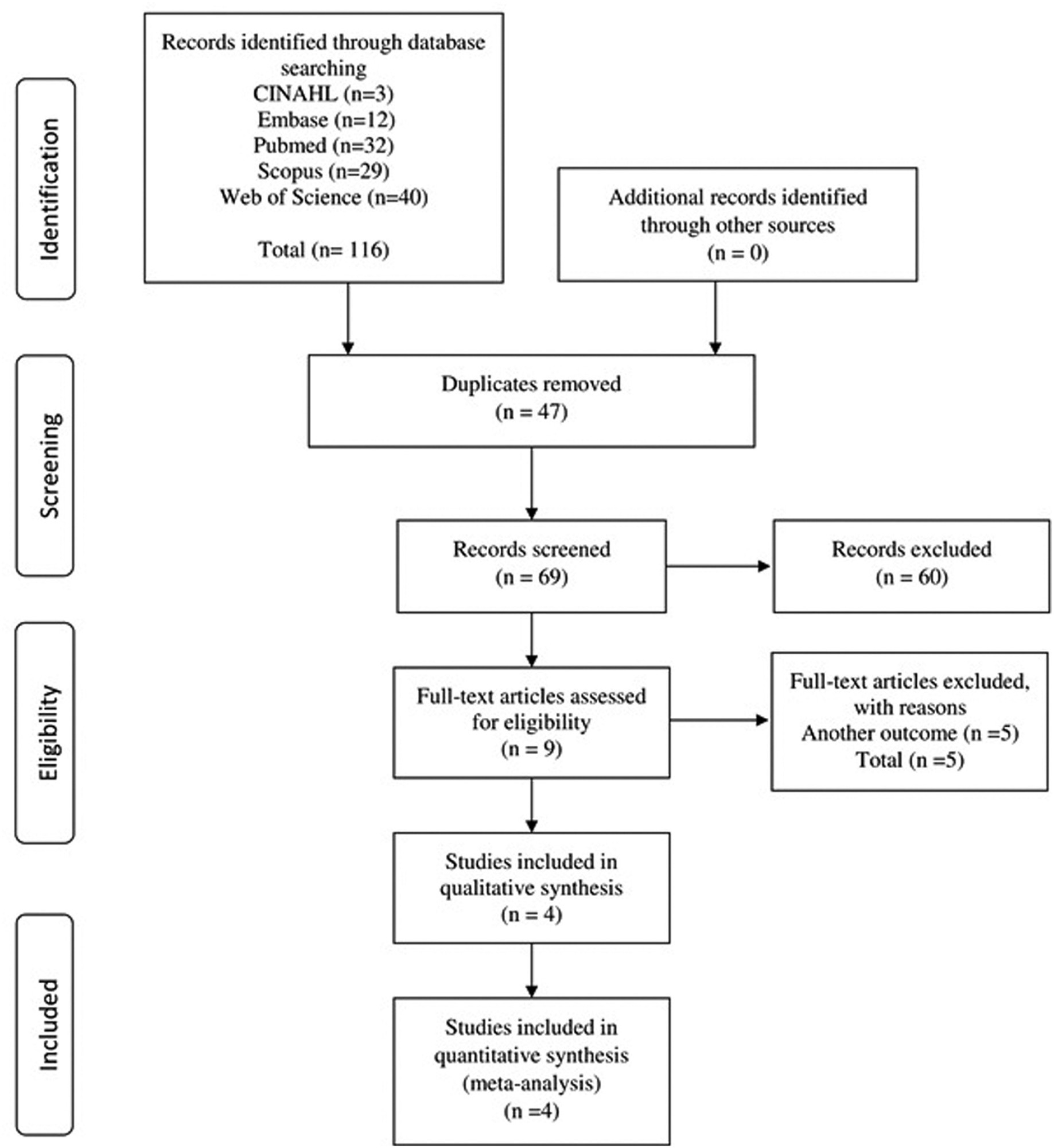You searched for:"Waldemar Naves do Amaral"
We found (11) results for your search.Summary
Rev Bras Ginecol Obstet. 2012;34(8):376-380
DOI 10.1590/S0100-72032012000800006
PURPOSES: To describe the process of gait initiation of pregnant women and to compare the behavior of the pressure center in the three trimesters of pregnancy. METHODS: Fifty-seven low-risk pregnant women were evaluated, aged 18 to 35 years, selected for convenience location during the three trimesters of pregnancy. The women were divided into three groups of 19 subjects each, according to gestational age - 1st quarter (4-12 weeks), 2nd quarter (13-28 weeks), and 3rd quarter (29-42 weeks,). Each patient was positioned standing up with one foot on each AMTI force platform until she heard a beep indicating that she should start walking a distance of four meter. Data were analyzed using the SPSS software. The Kolmogorov Smirnov test, Tukey's test and Spearman correlation coefficient were used for group comparisons, with 5% significance level in all tests. RESULTS: Significant differences were found between the 1st quarter (GFT) and 3rd quarter (GTT) groups regarding mediolateral oscillation amplitude (GFT: 0.4 cm and GTT: 0.2 cm) and mediolateral displacement rate (GFT: 0.9 cm/s and GTT: 0.4 cm/s). There was a gradual decrease in anteroposterior and mediolateral oscillation rate, and in the speed of displacement from platform 1 to platform 2 in GFT. There was a significant difference in oscillation amplitude and mediolateral displacement speed between GFT and GTT. CONCLUSION: The variables analyzed showed minor differences and do not constitute an imminent risk for the stability dynamics of pregnant woman.
Summary
Rev Bras Ginecol Obstet. 2014;36(11):484-488
DOI 10.1590/S0100-720320140004952
To evaluate sexual function in women undergoing assisted reproductive techniques.
This is a case-control study including 278 women assisted in Human Reproduction services and at the Gynecology Clinic of the University Hospital, Federal University of Goiás, Brazil. The women were divided into a study group (168 infertile women) and a control group (110 fertile women), and they answered the Female Sexual Function Index (FSFI) questionnaire used the assess the sexual function. We calculated the odds ratio (OR) for the chance of sexual dysfunction in infertile women (p<0.05).
Out of the analyzed women, 33.09% reported sexual dysfunction, with no difference in the FSFI score between groups (p=0.29). The prevalence of sexual dysfunction was of 36.30% among infertile women and 28.18% among fertile women; however, there was no difference between FSFI scores (p=0.36). The desire and arousal domains were significantly different among infertile women (p=0.01). Infertile women had the same chances of having sexual dysfunction as fertile women (OR=1.4, 95%CI 0.8–2.4; p=0.2).
There were no differences between infertile and fertile women. Infertile women undergoing assisted reproduction techniques require professional approach to sexual health regarding desire and arousal.
Summary
Rev Bras Ginecol Obstet. 2023;45(10):609-619
To investigate the clinicopathological significance and prognosis of the expression of the anterior gradient 3 (AGR3) protein in women with breast cancer.
The PubMed, CINAHL, EMBASE, Scopus, and Web of Science databases were searched for studies published in English and without restrictions regarding the year of publication. The search terms were: breast cancer AND anterior gradient 3 OR AGR3 expression.
We included observational or interventional studies, studies on AGR3 protein expression by immunohistochemistry, and studies on invasive breast cancer. Case reports, studies with animals, and reviews were excluded. In total, 4 studies were included, containing 713 cases of breast cancer.
Data were extracted on clinicopathological characteristics and survival. A meta-analysis of the prevalence of AGR3 expression was performed according to the clinicopathological characteristics, hazard ratios (HRs), and overall survival and disease-free survival.
The expression of AGR3 was found in 62% of the cases, and it was associated with histological grade II, positivity of estrogen and progesterone receptors, low expression of ki67, recurrence or distant metastasis, and lumen subtypes. In patients with low and intermediate histological grades, AGR3 expression was associated with worse overall survival (HR: 2.39; 95% confidence interval [95%CI]: 0.628–4.159; p = 0.008) and worse disease-free survival (HR: 3.856; 95%CI: 1.026–6.686; p = 0.008).
The AGR3 protein may be a biomarker for the early detection of breast cancer and predict prognosis in luminal subtypes. In addition, in patients with low and intermediate histological grades, AGR3 protein expression may indicate an unfavorable prognosis in relation to survival.
